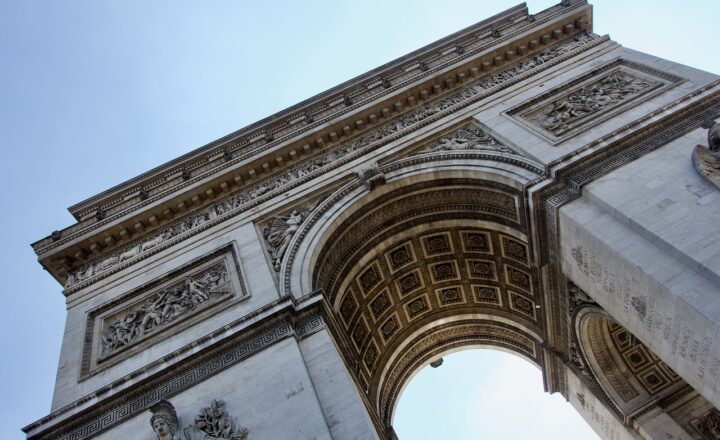The Stories of Hidden Places That Were Accidentally Discovered
November 17, 2024

Throughout history, countless incredible places have been accidentally discovered, unveiling mysteries and treasures that were thought to be lost forever. From ancient ruins to forgotten underground cities, these hidden gems tell rich stories of our past and present. In this article, we delve into some of the most fascinating instances where explorers, builders, and even ordinary people stumbled upon these extraordinary locations, reshaping our understanding of history and culture.
1. The Lost City of Petra
Petra, often referred to as the “Rose City” due to the striking color of the rock from which it is carved, is a world-renowned archaeological site in Jordan. While it has become a popular tourist destination today, Petra was largely forgotten by the Western world until its rediscovery in 1812 by Swiss explorer Johann Ludwig Burckhardt. Hidden from view for centuries, Petra was known to local Bedouins but was thought to be a mere shadow of its former glory. Burckhardt’s chance encounter with the site, disguised as a local, led to a resurgence of interest in this once-thriving city.
Nestled between towering cliffs, Petra showcases intricate carvings, tombs, and an advanced water conduit system that speaks volumes about the Nabataean civilization. Its rediscovery opened doors to understanding ancient trade routes and the region’s historical significance in the spice and silk trade.
2. The Terracotta Army
In 1974, a group of farmers digging a well in Shaanxi province, China, stumbled upon one of the most significant archaeological finds in history: the Terracotta Army. These life-sized statues, buried with Qin Shi Huang, the first Emperor of China, were constructed over 2,200 years ago to accompany him in the afterlife.
Each figure is unique, showcasing intricate details from hairstyles to facial expressions and even build. Initially thought to be a small collection, excavation revealed thousands of these statues, along with horses and chariots, peering out from their eternal resting place. Their discovery has provided invaluable insights into ancient Chinese funerary practices and military formation.
3. The Cave of Altamira
Discovered in northern Spain in 1879, the Cave of Altamira was revealed accidentally by a young girl and her father while exploring the area. The cave houses stunning prehistoric paintings that date back to the Upper Paleolithic period, showcasing bison and other animals in a level of detail that was unexpected for its time.
These artworks are not only visually arresting but also serve as a critical link to understanding early human creativity and culture. The unintended discovery of Altamira changed the trajectory of cave art studies, highlighting the sophistication of prehistoric peoples in Europe.
4. The Shipwreck of the Nuestra Señora de Atocha
In 1622, the Spanish galleon Nuestra Señora de Atocha sank off the coast of Florida during a hurricane while carrying a load of treasure from the New World to Spain. For centuries, the wreck remained undiscovered. It wasn’t until 1985 that treasure hunter Mel Fisher, using leads from historical documentation, stumbled upon the wreck site, uncovering an estimated $450 million worth of gold, silver, and emeralds.
Fisher’s accidental discovery not only changed his life significantly but also provided insight into maritime history and the dangers faced by explorers in the age of sail. The artifacts recovered from the Atocha now serve as a testament to the vast wealth of the Spanish Empire and the tumultuous nature of seafaring life.
5. The Lascaux Caves
In 1940, four teenagers exploring the countryside in southwestern France stumbled upon a hidden entrance to the Lascaux Caves, a location that would become world-famous for its prehistoric cave paintings. The paintings depict an array of animals and human figures, shedding light on life during the Upper Paleolithic era.
These artworks date back approximately 17,000 years and are notable for their artistic quality and their depiction of naturalistic animal forms. The unexpected discovery of the Lascaux Caves significantly contributed to our understanding of prehistoric human behavior and artistic expression, but it also led to concerns about preservation, resulting in the cave’s closing to the public to protect its delicate environment.
6. Machu Picchu
Machu Picchu, one of the most iconic landmarks in Peru, was brought to international attention in 1911 by historian Hiram Bingham. However, the site was already known to the local indigenous people, so the true accidental discovery was in how Bingham brought it to the world stage.
Nestled high in the Andes Mountains, Machu Picchu is believed to have been a royal estate or religious site for the Inca civilization. The site’s incredible terraces, temples, and aqueducts highlight the engineering skills of the Inca and their harmonious relationship with the landscape. Bingham’s exploration of the site changed how we view Andean culture and spurred further archaeological endeavors in the region.
7. The Ice Man – Ötzi
In 1991, two German tourists hiking in the Alps stumbled upon a mummified body protruding from a glacier. The man, later known as Ötzi, turned out to be over 5,000 years old, making him one of the oldest natural human mummies ever discovered. His accidental discovery provided extraordinary information about life in the Chalcolithic period, including clothing, tools, and diet.
Ötzi’s well-preserved state allowed researchers to analyze his DNA, revealing insights into health, longevity, and lifestyle during that era. The ongoing studies of Ötzi contribute significantly to our understanding of prehistoric European life.
Conclusion
The stories of hidden places accidentally discovered throughout history exemplify how chance encounters can significantly alter our understanding of past civilizations and cultures. These accidental discoveries open windows into human ingenuity, creativity, and the richness of history often hidden beneath the surface.
As we explore these places, we gain not only knowledge but also a deeper appreciation for the incredible journeys that have brought us to where we are today. Each discovery serves as a reminder that history is often waiting just beneath our feet, waiting for the right moment to be unveiled, and we should continue encouraging exploration and curiosity wherever we go.







